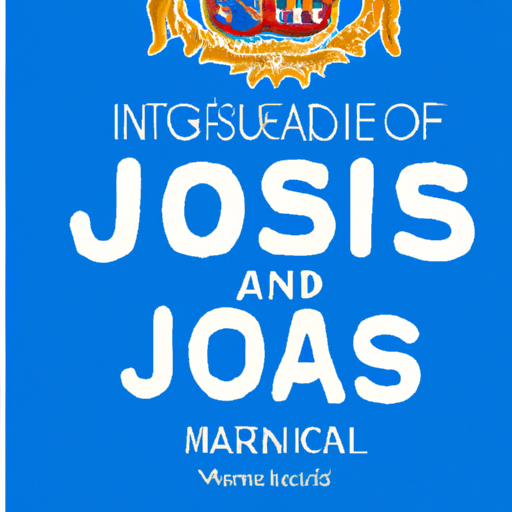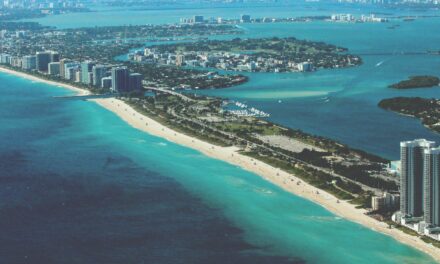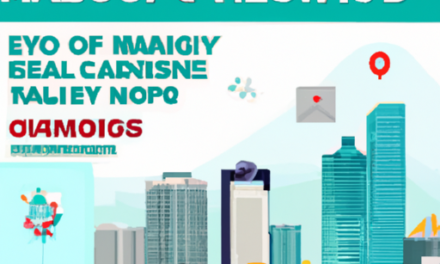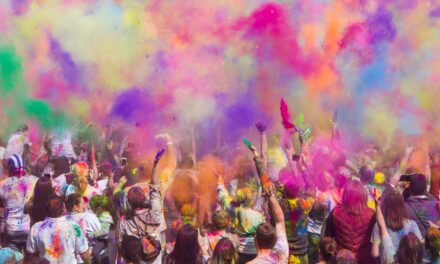Have you ever wondered about the incredible diversity that Miami has to offer? Look no further than “How Diverse Is Miami?” This product is your ultimate guide to discovering the multicultural wonders of this vibrant city. Packed with fascinating statistics, eye-opening anecdotes, and breathtaking visuals, you’ll gain a deep understanding of the diverse communities that call Miami home. Get ready to embark on a journey of discovery as you uncover the rich tapestry that makes Miami one of the most diverse cities in the world. Miami is known for its incredible diversity, making it a vibrant and culturally rich city. With a population consisting of various ethnicities, cultures, and languages, Miami truly embodies the melting pot of America. In this article, we will explore the demographic composition, cultural diversity, and ethnic communities that contribute to the unique fabric of Miami.

Demographic Composition
Miami’s population is incredibly diverse, with people from all walks of life calling the city home. As of the latest census, the total population of Miami stands at approximately 2.7 million. This makes Miami the second-most populous city in Florida, trailing only behind Jacksonville. The population density is also relatively high, with over 13,000 people per square mile, making it one of the most densely populated cities in the United States.
Age Distribution
Miami boasts a well-balanced age distribution, with a mix of children, working-age individuals, and seniors. The city is particularly popular among young professionals and families due to its thriving job market and quality education options. The vibrant energy of Miami attracts young people from all over the country and even internationally, contributing to its diverse age makeup.
Gender Ratio
When it comes to gender, Miami maintains a relatively equal distribution. The city is home to a vibrant community of both males and females, with opportunities and resources available for everyone. This gender balance is reflected in various sectors, including education, employment, and healthcare.
Languages Spoken
Miami is often dubbed as the “Gateway to the Americas,” and this title is well-deserved considering the region’s linguistic diversity. While English remains the primary language, Spanish is widely spoken throughout the city. In fact, Miami has the highest percentage of Spanish speakers among major U.S. cities. Additionally, due to its multicultural nature, Miami also boasts a significant number of residents who speak other languages, including Creole, Portuguese, French, and Haitian.

Cultural Diversity
Miami’s cultural diversity is evident in various aspects of everyday life, from its rich heritage to its vibrant arts scene and culinary offerings. The city’s cultural makeup can be attributed to the influence of different ethnic communities and their respective traditions and customs.
Cultural Heritage
Miami’s cultural heritage is a tapestry woven with threads from all around the world. Latin American influence, particularly from countries such as Cuba, Mexico, and Colombia, is ubiquitous. From the lively music of salsa and reggaeton to the colorful festivals celebrating Hispanic culture, Latin American heritage is deeply ingrained in Miami’s identity.
Adding to the cultural mosaic is the Caribbean influence, which can be seen in the vibrant celebrations of Carnival and the rhythmic beats of reggae and calypso music. European influence is also prevalent, with neighborhoods like Little Havana and Little Haiti showcasing the rich traditions brought by immigrants from Cuba and Haiti, respectively.

Religious Diversity
An essential aspect of Miami’s cultural diversity is its religious landscape. The city is home to a wide range of religious beliefs and practices, with various denominations represented. Christianity, particularly Catholicism and Protestantism, is the dominant religion, followed by Judaism, Islam, Hinduism, and Buddhism. This religious diversity fosters an atmosphere of acceptance and tolerance within the Miami community.
Art and Entertainment
From world-class museums to vibrant street art, Miami is an art lover’s paradise. The city is famous for its thriving art scene, with prominent art festivals, galleries, and street murals adorning its walls. Miami is also a hub for performing arts, with numerous theaters and performance venues showcasing a diverse range of cultural expressions, including dance, music, and theater.

Cuisine
Miami’s culinary scene is a reflection of its cultural diversity. From traditional Cuban dishes like empanadas and Ropa Vieja to mouthwatering Colombian arepas and Puerto Rican mofongo, the city offers a wide variety of delicious international cuisines. Local flavors blend seamlessly with international influences, creating a truly unique gastronomic experience.
Ethnic Communities
Miami is home to various ethnic communities, each contributing to the city’s cultural tapestry in their own unique way.
Hispanic/Latino Community
The Hispanic/Latino community is one of the largest and most influential in Miami. With a strong presence of Cuban, Mexican, Colombian, and Venezuelan immigrants, Miami’s Hispanic population contributes significantly to the city’s cultural diversity. The community celebrates its traditions through music, dance, festivals, and cuisine, adding a vibrant and lively atmosphere to Miami’s cultural landscape.
African American Community
Miami’s African American community has deep roots in the city’s history and culture. From the legacy of the historic Overtown neighborhood to the influential contributions of African American artists, musicians, and professionals, this community has played a vital role in shaping Miami’s cultural identity.
Asian American Community
The Asian American community in Miami represents various nationalities and cultures, including Chinese, Indian, Filipino, Vietnamese, and many others. These diverse communities add their unique traditions, festivals, and cuisine to the cultural fabric of Miami, enhancing the city’s multicultural atmosphere.
European American Community
Miami’s European American community is comprised of individuals from various European countries who have made Miami their home. Their cultural heritage is evident in the city’s architecture, cuisine, and traditions. German, Italian, and French influences, among others, can be seen in Miami’s diverse neighborhoods and cultural events.
Indigenous Communities
While Miami is predominantly known for its immigrant communities, it is also home to indigenous communities whose roots trace back to the region’s pre-colonial history. These communities, such as the Miccosukee and Seminole tribes, have a rich history and continue to preserve their unique traditions and cultural practices.

Population
Understanding the population dynamics of Miami is essential in gauging the city’s growth, migration patterns, and overall demographic makeup.
Total Population
Miami’s total population stands at approximately 2.7 million people, making it one of the most populous cities in the United States. The city’s continuous growth can be attributed to its strong economy, favorable climate, and diverse cultural opportunities.
Population Growth
Miami’s population continues to grow at a steady pace, fueled by both natural increase and migration. The city’s thriving job market, coupled with its vibrant cultural scene and warm climate, attracts individuals from all over the country and around the world. This population growth lends further enriches the city’s diversity.
Migration Patterns
Miami has long been a preferred destination for immigrants seeking new opportunities and a better quality of life. Historically, the city has welcomed waves of individuals from Cuba, Haiti, and various other countries in Latin America and the Caribbean. Miami’s proximity to these regions, coupled with its vibrant cultural scene, has made it a natural magnet for individuals seeking new beginnings.
Age Distribution
Understanding the age distribution within a population provides valuable insights into the composition and needs of the community.
Children and Youth
Miami takes great pride in its commitment to providing quality education and resources for children and youth. The city offers a wide range of public and private schools, as well as extracurricular programs and initiatives aimed at fostering youth development.
Working Age Population
Miami’s working-age population is comprised of individuals in their prime years of productivity. The city’s strong job market and economic opportunities attract professionals from various industries, contributing to its vibrant and diverse workforce.
Elderly Population
Miami’s elderly population is growing, making it essential to provide adequate healthcare, social services, and recreational activities for seniors. The city recognizes the importance of creating age-friendly spaces and programs that cater to the needs and interests of its older residents.
Gender Ratio
Despite its cultural diversity, Miami maintains a relatively equal distribution of males and females within its population. This gender balance creates a harmonious environment and ensures equal opportunities and resources for everyone.
Male Population
Miami’s male population is a vital part of the city’s cultural fabric. Men from all backgrounds contribute to the city’s workforce, arts scene, and civic life, playing an active role in shaping Miami’s identity.
Female Population
Miami’s female population is equally significant, with women making significant contributions to the city’s economic and cultural spheres. Women participate in various industries, excel in arts and entertainment, and actively engage in community-building initiatives.
Languages Spoken
The linguistic diversity of Miami is a testament to the city’s status as a cultural melting pot.
English
English is the primary language of communication in Miami. It serves as the common language that brings diverse communities together, fostering a sense of unity and understanding.
Spanish
Spanish is widely spoken in Miami due to the significant number of residents from Latin American countries. In fact, Miami has the highest percentage of Spanish speakers among major U.S. cities, making it an ideal destination for individuals looking to immerse themselves in Hispanic culture and language.
Other Languages
In addition to English and Spanish, Miami is home to residents who speak various languages from around the world. Creole, Portuguese, French, Haitian, and many other languages contribute to the linguistic tapestry of the city, reflecting the diverse origins of its residents.
Cultural Heritage
Miami’s cultural heritage is a vibrant tapestry woven with influences from Latin America, the Caribbean, Africa, and Europe.
Latin American Influence
The influence of Latin American culture is pervasive in Miami, given the significant population of individuals from countries such as Cuba, Colombia, and Venezuela. The city’s streets come alive with the sounds of salsa, merengue, and reggaeton, and festivals celebrating Hispanic culture and traditions take place throughout the year.
Caribbean Influence
The Caribbean influence in Miami is undeniable, with communities from Jamaica, Haiti, the Dominican Republic, and other Caribbean nations contributing to the city’s colorful cultural landscape. The vibrant celebrations of Carnival, the rhythmic beats of reggae and calypso music, and the mouthwatering flavors of Caribbean cuisine all add to the cultural richness of Miami.
European Influence
Miami’s European influence can be seen in its diverse architecture, culinary offerings, and cultural events. Neighborhoods like Little Havana and Little Haiti encapsulate the traditions and heritage brought by immigrants from Cuba and Haiti, respectively. European immigrants have also played a significant role in shaping Miami’s culinary scene, with Italian, French, and German influences adding a unique flavor to the city’s dining options.
African Influence
The African influence in Miami is deeply rooted in the city’s history and culture. From the rich heritage of African American communities to the rhythmic beats of Afro-Caribbean music, African culture has left an indelible mark on Miami. The city celebrates African traditions through various cultural events and festivals, highlighting the resilience and contributions of the African diaspora.
Indigenous Communities
While Miami is often associated with its immigrant communities, it is important to acknowledge the indigenous communities whose roots trace back to the region’s pre-colonial history.
History and Identity
Miami is home to indigenous communities such as the Miccosukee and Seminole tribes, who have inhabited the area for centuries. These communities have a rich history and cultural identity deeply intertwined with the region’s natural environment. The indigenous peoples’ profound connection to the land and their traditions contributes to the overall cultural diversity of Miami.
Challenges and Resilience
Like many indigenous communities across the country, Miami’s indigenous population faces unique challenges and struggles. These challenges often stem from historical injustices and ongoing issues related to land rights, cultural preservation, and socioeconomic disparities. Despite these challenges, Miami’s indigenous communities demonstrate incredible resilience, striving to preserve their heritage and traditions for future generations.
In conclusion, Miami’s incredible diversity makes it a unique and vibrant city. From its demographic composition and age distribution to its cultural heritage and ethnic communities, Miami embodies the ideals of inclusivity, acceptance, and celebration of different traditions and backgrounds. The city’s rich multicultural tapestry fosters an environment where everyone can feel welcome and appreciated, making Miami a true melting pot of cultures and a shining example of diversity in America.





